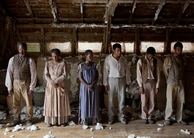Opinion:The Law of Adoption: A Time for Change
By
2010, Vol. 2 No. 12 | pg. 1/1
KEYWORDS:
Adoption is often classified under one umbrella with the assumption that all adoptions are the same. In reality, adoptions are not the same and in some situations are not even similar. Adoption statutes vary by state and individual situations can be affected by the race of the child and even by the religion of the birth mother. If no two adoptions are the same, how can something so complex be categorized under one, broad term? It cannot, and therefore, the best interest of the child in a particular case may not be the same in the case of another child. For this reason, the decision to receive identifying information relative to the child’s adoption should be the adoptee’s decision when they reach the age of majority. The definition of adoption is to take and rear as one’s own child, specifically by a formal legal act. However, there is no legal definition of adoption. For a long time, adoption did not even require legal agreements or judicial approval, and adoption was simply an informal agreement between two families. In the early 1900s, states began creating laws in order to ensure judicial involvement in these private agreements. Adoption has generally occurred with children born out of wedlock and when the families could not take care of the children. The origins of adoption stem from protecting the child from growing up with a stigma they may face due to the circumstances of their birth, but it seems that was as much to protect the mother and birth family as much as it was about the child. Adoption is often viewed positively by society and has many benefits such as loving families that care for and raise their adopted children as if they were their own and giving them opportunities for better lives. However, adoption also has negative implications including emotional and psychological problems for the child. The adopted child may feel a sense of abandonment and copes either by clinging on to people and relationships in an unconscious attempt to prevent anyone else from abandoning them, or by pushing people away because they feel that it is better not to care and that way when a person leaves they do not experience the sense of hurt and abandonment. In a society that preaches phrases such as “blood is thicker than water” and stresses the importance of being able to rely on family, who is there for a child of adoption to lean on since their family is not blood?As Betty Jean Lifton says in her book The Search, “adoptees view the policy of confidentiality as a euphemism for putting everyone’s rights over their own, although as babies they had no say in the transaction”(Wegar, 1997). Every time an important decision that could affect the adoptees life came up, they had no say in it. Whether or not they live with their biological parent; who they ultimately live with and are raised by; whether or not they can see identifying information; whether or not they receive their medical history; all these decisions are being made for them, so at what point should it become their decision? When a child is born and brought up in their biological family, he or she knows where they came from, and can ask any and all questions about the family’s heritage and medical history that may arise during childhood. By contrast, when a child is adopted, they often grow up not knowing where they came from and not having information about their biological family’s background or medical history. The adopted child usually desires information and may ask questions that their adoptive parents likely do not have the answers to. In taking away the rights of an adoptive child from knowing this information, society is saying that these children are inferior to those children who are not adopted. An adopted child should have the same rights as any other child and those rights include their right of knowledge of family background and medical history. Some studies have found that many adoptees are ashamed and embarrassed by their adoptive status and overwhelmed by feelings of being “unfinished” or “imperfect.” Often times these feelings are unintentionally supported by the adoptive parents telling adoptees that they do not have to tell people they are adopted and that it is a private matter. The desire to know precisely why they were placed for adoption and whether they had been loved and wanted are key determinants in whether or not a child searches for their birth parents (Mabry & Kelly, 2006). Birth mothers often argue they have a constitutional right to privacy and that their personal information should never be released to the adoptee. However, the right to privacy is not an absolute right and birth mothers should lose some amount of their privacy rights when it comes to placing a child for adoption. If the birth mother decided to keep the child, privacy would not be an issue because the child would know their mother; therefore, she does not have the right to privacy of that same child just because she decided to place the child for adoption. As a consequence of their choices, sex offenders lose their right to privacy at conviction and when they have to register on the sex offender registry board, public figures lose most of their rights to privacy when they become famous, and a birth parent should lose some of their rights to privacy when they put a child up for adoption. Birth mothers often want assurances from adoption agencies and the courts that their identities will remain confidential. Often times they receive this assurance, the records are sealed, and it is noted that the child does not have the right to receive identifying information when they reach the age of majority. However, the right to privacy as it stands in the Constitution, is a right to privacy from governmental intrusion, not a right to privacy from one’s own flesh and blood. Birth mothers often wants this right to privacy because they want to be free from the fear that the child might resurface and reveal their secret to the public, family, and friends who may not have known about the adoptee’s existence. These birth mothers are looking for a chance to not have to deal with the consequences of their actions, something everyone has to do every day of their lives. The birth mothers are looking for a way to not have to deal with the consequences of their actions, but they should have to deal with them, especially when there are many benefits for the adopted child who had no say in the adoption decision. Another reason birth mothers should not have an ultimate say in whether the adoptee receives identifying information is they are human and can change their mind. Many birth mothers decide years after the birth of the child that they do want to know the child and may like to have a relationship with the child. Many mothers who put their children up for adoption are under the age of 25, which means they do not have a fully developed brain. They also cannot fully rationalize the situation due to hormonal changes and are in the midst of emotional turmoil, all of which create a situation in which the mother should not be making such a drastic, life-altering decision for both her and the child. In response, many birth mothers and activists suggest voluntary mutual consent adoption registries. These registries are either passive or active, active being the more effective of the two. Active registries require staff and trained, certified intermediaries to conduct searches, make contacts, and facilitate reunions (Mabry & Kelly, 2006). However, these adoption registries only work if both parties are open to a reunion and are willing to be found. Most adoptees that seek to unseal their records do so because of their inability to gain any information from the birth mother’s desire to remain anonymous. Although these registries have worked for some people, many feel these registries do not help in finding people who do not want to be found, resulting in a waste of time and sometimes money. The long term social, emotional and psychological effects to the birth child should take precedent over the birth mother’s desire to keep the child a secret. There are many reasons why a birth mother might desire to keep her pregnancy and choice to place the child up for adoption a secret, but there are also many reasons why the child needs to know the particulars of their adoption. “The primal wound is the devastation which the infant feels because of separation from its natural mother. It is the deep and consequential feeling of abandonment which the baby adoptee feels after the adoption and which continues for the rest of his life” (Verrier, 1993). The adoptee has a personal need to know where they came from, to understand the circumstances of the adoption, or often times the child will grow up feeling abandoned and will always feel inadequate. It is a true psychological problem for adoptees not to know the background information of their adoption, therefore, giving reason to why the child deserves the option to see their adoption record and also to seek out their birth parent to ask questions. There are many things the birth parents know that the papers will never tell, ergo, leaving the child feeling empty without having a chance to contact their birth parents. Social scientists have concluded that as adoptees grow and develop their own identities, many need information about their past to fully develop their identity. Some adoptees have an overpowering desire and need to know the circumstances of their birth and adoption, as well as whether their parents looked like them physically. Often, an adoptee’s ability to develop self-esteem is intertwined with his or her need to know this information (Mabry & Kelly, 2006). Many children are placed for adoption due to pregnancy out of wedlock or the parent being too young to properly raise the child. In those instances, as well as, with any adoption in Alaska, Arizona, Colorado, Delaware, D.C., Florida, Georgia, Hawaii, Idaho, Kentucky, Louisiana, Maine, Maryland, Massachusetts, Missouri, Mississippi, Montana, New Hampshire, Nebraska, North Carolina, North Dakota, Pennsylvania, Rhode Island, South Dakota, Tennessee, Vermont, West Virginia, and Wisconsin where medical history disclosure is not required, adoptees do not have any medical information, which could be pertinent to their health or the health of their children if they choose to have them. When a birth parent is young, important medical history such as alcoholism and cancer may not be known. With a predisposition to either of those, an adopted child may choose to change their lifestyle accordingly. However, for adoptees with no medical history, they do not have the knowledge and therefore do not have a chance to change their lifestyle. Also, some biological diseases only appear every few generations and the adoptee may be a carrier. The adoptee needs their family medical history in order to better assess whether or not they are a carrier of a disease or are predisposed to certain diseases, both of which affect them as well as their future children and families. It is hardly reasonable to think that a birth mother’s right to privacy is more important than the health of the adoptee or their future children. The movement to unseal adoption records began with Florence Fisher, an adoptee who publicized her twenty-year search for her birth mother. She openly criticized all who would not help her in her search, including lawyers, doctors, court clerks and hospital personnel. She received feedback from many adoptees sharing in her frustration, inciting her to organize Adoptee’s Liberty Movement Association (ALMA). The goal of ALMA was to “abolish the existing practice of sealed records… [and cause the] opening of records to any adopted person over eighteen who want, for any reason to see them.” ALMA filed a lawsuit against New York adoption agencies and state officials in 1977 alleging that New York’s sealed record statutes violated adoptee’s due process, equal protection and Thirteenth Amendment rights under the United States Constitution. The United States Court of Appeals for the Second Circuit denied each claim (Mabry & Kelly, 2006). ALMA was on track with this lawsuit, despite the Court of Appeals denial, in that in most states, the sealed record statutes do violate adoptees’ due process of law rights, in that adoptees have a due process right to personal information. Other arguments in support of ALMA’s case and adoptee’s rights is their Ninth Amendment right to know their identity- an element that is essential in their personhood and their capacity to become psychologically stable. Also sealed records violate an adoptee’s equal rights protection because they are the only group that cannot access or obtain this information freely. Also, some adoptees have argued that like a due process right, they have a First Amendment right to receive personal information. The problem does not lie in these arguments, which have all been unsuccessful in court, but lies in the high standard of proof necessary to unseal adoption records (Mabry & Kelly, 2006). In most states, the standard of proof for unsealing adoption records must contain one or a combination of the following: exceptional circumstances, a compelling need, cause, good cause or to promote the child’s wellbeing (Mabry & Kelly, 2006). The standard of proof in other court situations, for example medical malpractice, is much easier to achieve than the standard of proof for unsealing adoption records. Yet, unsealing adoption records is to benefit the adoptee, an innocent person in this situation, while medical malpractice lawsuits often will ruin a doctor’s reputation, if successful, and are many times, unfounded claims. If a person can so easily sue another person, ruining their reputation and possibly even their career over an unavoidable situation, an adoptee should be able to obtain information that is pertinent to their health, mental wellbeing, and psychological wellbeing. This is information about themselves, for what is a child but a bi-product of their parents. As of 2006, the most successful movement for unsealing adoption records occurred in 1998 when Bastard Nation, an activist adoption group, launched Measure 58- a ballot initiative in the state of Oregon to make “unaltered, original and unamended” birth certificates available to adoptees who were twenty-one or older. It also required that the same filing fees, waiting periods and procedures that non-adopted Oregonians faced should also apply to adoptees that sought their birth certificates. Bastard Nation initiated Measure 58 because it believed adoption records should be available to adoptees without condition or restriction. A majority of Oregonians voted to adopt the law, amid controversy (Mabry and Kelly, 2006). Seven birth mothers filed a class action that challenged Measure 58 on constitutional grounds. They alleged that they were assured of privacy and confidentiality when they placed their children for adoption between 1960 and 1994, of which they expected a continuation of this privacy and anonymity until they decided otherwise. Due to these appeals, the enactment of the law was postponed until May of 2000. However, during that time, the state of Tennessee enacted legislation that allowed adoptees to receive their birth certificate, which was also challenged in the courts. Ultimately, Measure 58 was upheld because it did not violate the Oregon or United States Constitutions. The Tennessee legislation was also enacted, after the appeals court denied the legislation and the Supreme Court of Tennessee overruled and enacted the legislation concluding that it did not violate the birth mother’s right to privacy under the Tennessee Constitution (Mabry & Kelly, 2006). Recommendations to solve the issue of sealed adoption records include the release of medical history or the release of original birth certificates, rather than releasing all the information in the adoptee’s file. The release of medical history is only one aspect and, although it is a step in the right direction, would not help with the psychological, emotional and social growth of the child. The automatic disclosure of birth certificates to adult adoptees is a possible avenue that has been addressed in some states and has been successfully passed. In Alabama, Alaska, Kansas, New Hampshire, Oregon, and Tennessee adoptees must wait until they are 18-21 years of age, depending on the state, to receive their birth certificate, but once they reach the age of majority, they have automatic right to their original birth certificate. The best possible measure would be to unseal adoption records and give the adoptee access to their complete adoption record when they reach the age of majority. This would be the most effective way of dealing with all the issues that adoptees face. In allowing full disclosure, adoptees would have the option to contact their birth parents to search for background information. The adoptee could then obtain answers to questions they need answers to before they can move on with their lives. They could obtain their biological family’s medical history, and other information they may want or need. It would also give the adoptee and birth parents the opportunity to form a relationship. It has been found that many years later, birth parents desire to meet and form relationships with the children they had placed for adoption. What seems even more important than the “to search or not to search” question is the right of every adoptee who so wishes to know his or her background (Krementz, 2003). The issue of the acquisition of information to adoptees is as strong as ever. In a society that preaches free speech and freedom of information from the government, it is not fair that individuals are able to keep any information about themselves a secret from their own flesh and blood. Birth mothers argue that they are entitled to a level of privacy; however, that privacy is forfeited once they made the decision to have a child. There are other solutions that if agreed upon by both parties would provide a middle of the road compromise to meet the needs of the birth family and the adoptee. Release of birth certificates only, a questionnaire with any and all necessary information, and private meetings that do not involve anyone other than the birth parents and child could be considered. The best thing the courts can do is give the child the information they are entitled to, their background information. Adoptees need to have access to their biological families’ medical history, their background information, and all other information pertaining to their adoption in order to grow and mature healthily. With new policies and statutes in place, such as this or statutes similar to what is seen in Tennessee, it could be possible to solve many of the problems that are present with both adoptees and their birth parents.
References DeWoody, M. (1993). Adoption and disclosure. Washington, D.C.: Child Welfare League of America, Inc. Leavy, M.L., & Weinberg, R.D. (1979). Law of adoption. Dobbs Ferry, NY : Oceana Publications, Inc. Lifton, B.J. (1994). Journey of the adopted self. New York, NY: Basic Books. Mabry, C.R., & Kelly, L. (2006). Adoption law: theory, policy, and practice. Buffalo, NY: William S. Hein & Co., Inc. Verrier, N.N. (1997). The Primal wound: understanding the adopted child. Baltimore, MD: Gateway Press, Inc. Wegar, Katarina (1997). Adoption, identity, and kinship: the debate over sealed birth records. New Haven, CT: Yale University Press. Suggested Reading from Inquiries Journal
Inquiries Journal provides undergraduate and graduate students around the world a platform for the wide dissemination of academic work over a range of core disciplines. Representing the work of students from hundreds of institutions around the globe, Inquiries Journal's large database of academic articles is completely free. Learn more | Blog | Submit Latest in Opinion |


















